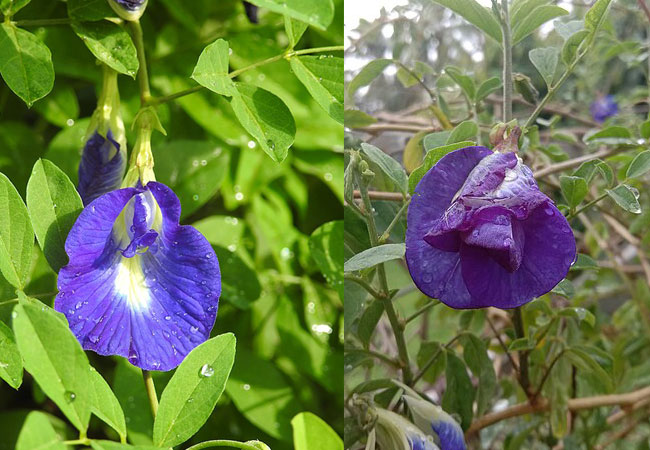Aparajita - Blue Pea
Meaning of Aparajita in English. How does Blue Pea look like
Learn what is Aparajita(Hindi), (Odia), (Urdu) known as English.

- Aparajita transliterate in EnglishBlue Pea
-
Aparajita description in English
Blue pea, scientifically known as Clitoria ternatea, is a striking flowering plant renowned for its vibrant azure petals. Native to Southeast Asia, it holds a significant cultural and culinary importance in various regions. Beyond its ornamental allure, blue pea is celebrated for its versatile applications. Its flowers are commonly used to create a natural blue dye, while its leaves and pods are utilized in traditional medicine for their purported health benefits. Additionally, blue pea flower tea, made by steeping the dried flowers, has gained popularity for its refreshing taste and reported antioxidant properties. This unassuming plant encapsulates both beauty and utility.
-
Blue Pea word root and origin:The blue pea (Clitoria ternatea) originates from tropical equatorial Asia, particularly India, Southeast Asia, and Malaysia.
FAQs about Aparajita (Blue Pea) in English.
What is Blue Pea Flower?
Blue Pea Flower, also known as butterfly pea or Clitoria ternatea, is a vibrant blue flower native to Southeast Asia. It is commonly used for its medicinal properties, as well as for culinary purposes, including making tea and natural food coloring.
What are the health benefits of Blue Pea Flower?
Blue Pea Flower is rich in antioxidants, particularly anthocyanins, which are known for their anti-inflammatory and immune-boosting properties. It is also believed to enhance cognitive function, reduce stress, improve skin health, and support eye health.
How do you make Blue Pea Flower tea?
To make Blue Pea Flower tea, steep 5-7 dried flowers in a cup of hot water for 5-10 minutes until the water turns a vibrant blue. You can add honey or lemon for flavor. Lemon juice also changes the tea’s color to purple due to the change in pH.
Is Blue Pea Flower safe to consume?
Yes, Blue Pea Flower is generally considered safe to consume in moderate amounts. However, as with any herbal supplement, it is advisable to consult a healthcare provider before adding it to your diet, especially for pregnant or breastfeeding women and individuals with health conditions.
Can Blue Pea Flower be used as a natural dye?
Yes, Blue Pea Flower is often used as a natural food and beverage dye. Its intense blue color is extracted by soaking the flowers in water and can be used in various recipes, such as rice, cocktails, and desserts.
What does Blue Pea Flower tea taste like?
Blue Pea Flower tea has a mild, earthy flavor with a slightly floral and grassy note. It is often combined with other ingredients, like lemon or honey, to enhance its flavor.
Does Blue Pea Flower have any side effects?
Blue Pea Flower is generally safe for most people. However, excessive consumption might lead to digestive issues such as nausea or stomach discomfort. Always start with small amounts to see how your body reacts.
How is Blue Pea Flower used in skincare?
Blue Pea Flower is used in various skincare products due to its antioxidant properties. It is believed to help reduce signs of aging, soothe skin irritation, and improve overall skin health.
Can Blue Pea Flower aid in weight loss?
Blue Pea Flower is sometimes associated with weight loss due to its metabolism-boosting properties. However, more scientific research is needed to conclusively determine its effectiveness in weight management.
Where can I buy Blue Pea Flower?
Blue Pea Flowers can be purchased at health food stores, specialty tea shops, and online retailers. They are available in various forms, including dried flowers, tea bags, powdered extracts, and pre-made tea blends.